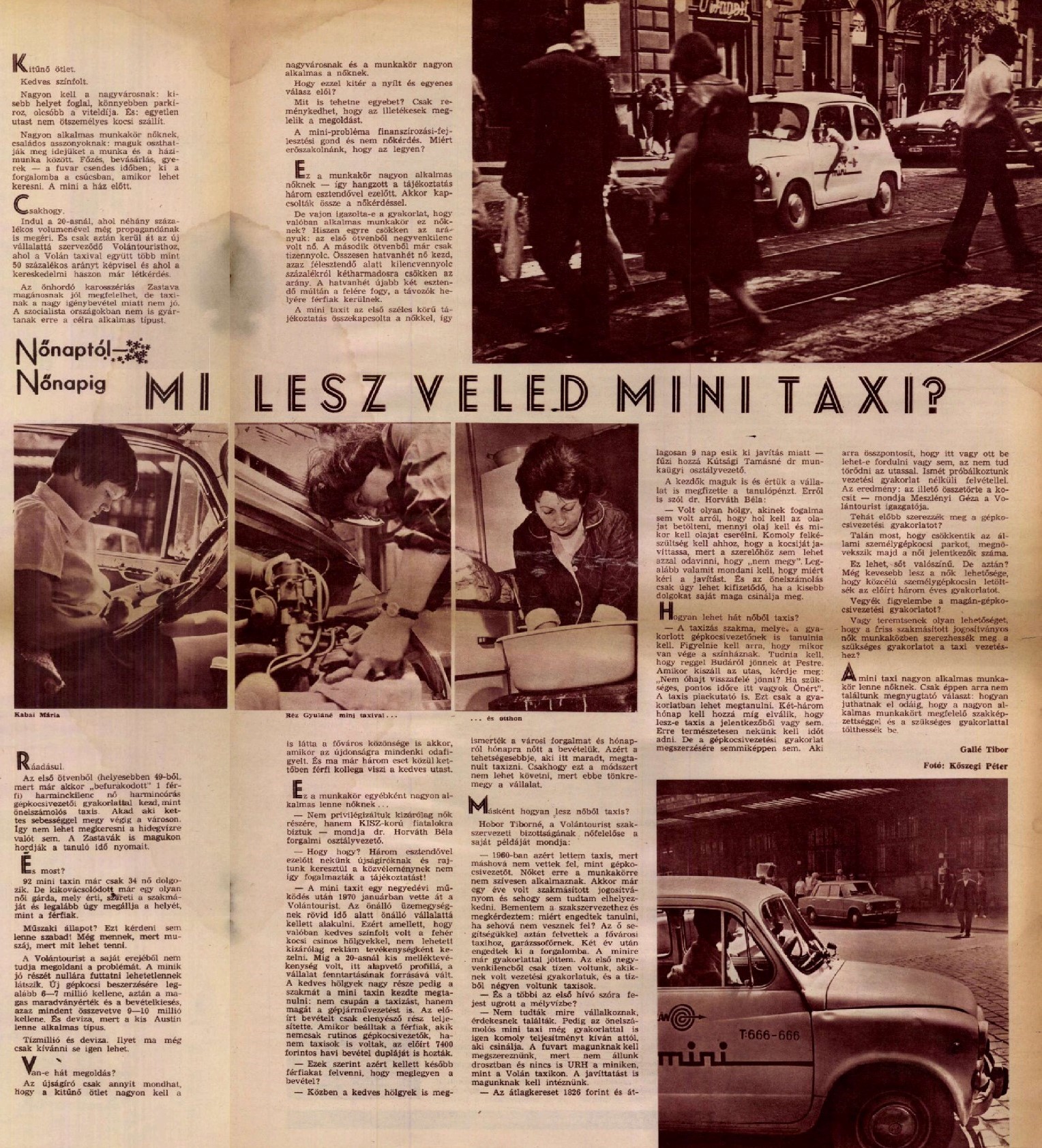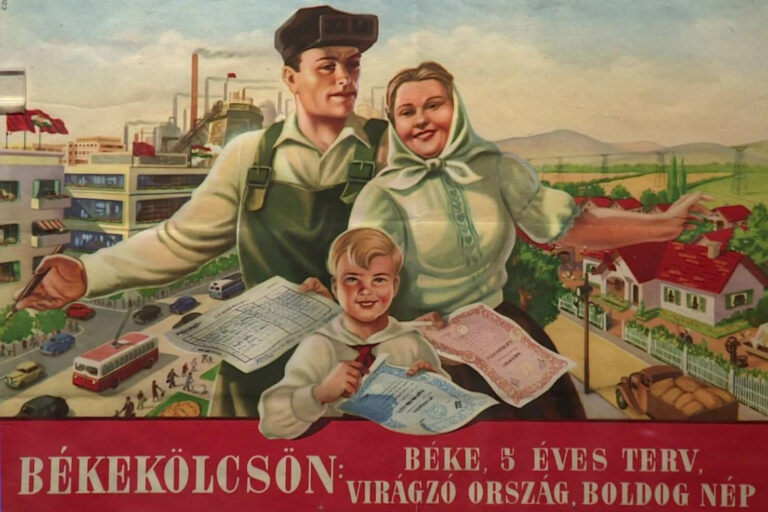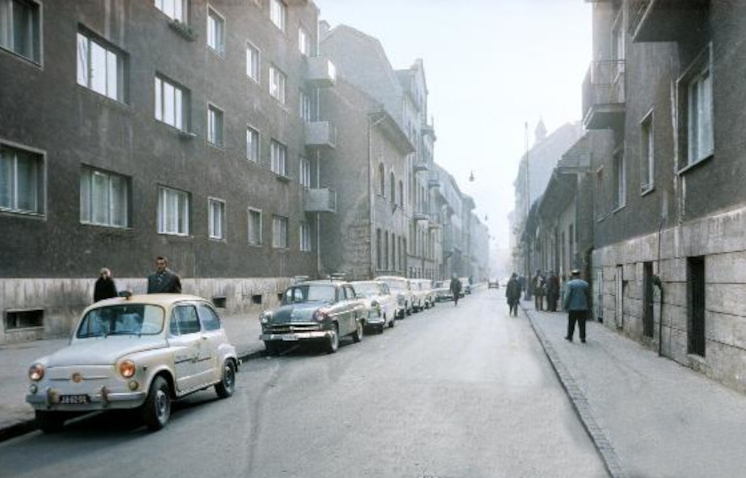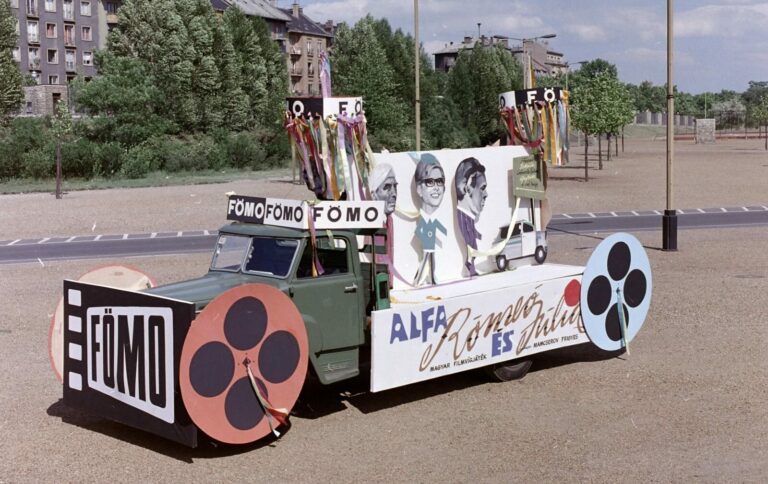1969-1974 - The crustacean Budapest "Mini-taxi" service 2.
A Volán c. trade journal 1972-already shows how - after just two years of operation - the storm clouds have gathered in the "mini-taxi" over the service. The chronic shortage of manpower, the technical content of the 750 Zastava, which was totally unsuitable for the task, and the general lack of resources made it clear already at that time - mid-1972 - that the enterprise was doomed to failure in the given framework.
Part one of the article series here you will find.
Published in July 1972, this critical essay, with its sometimes vitriolically sexist insights, offers an excellent insight not only into the deserving "mini-taxi", but also into the times:

Excellent idea.
A nice touch of colour.
It's a must for the big city: it takes up less space, it's easier to park, and it's cheaper to pay. And: no single passenger is carried by a five-seater car.
It is a very suitable job for women with families: they can divide their time between work and housework. Cooking, shopping, kids - the ride in quiet times; out in the traffic at peak times when you can earn. The mini in front of the house.
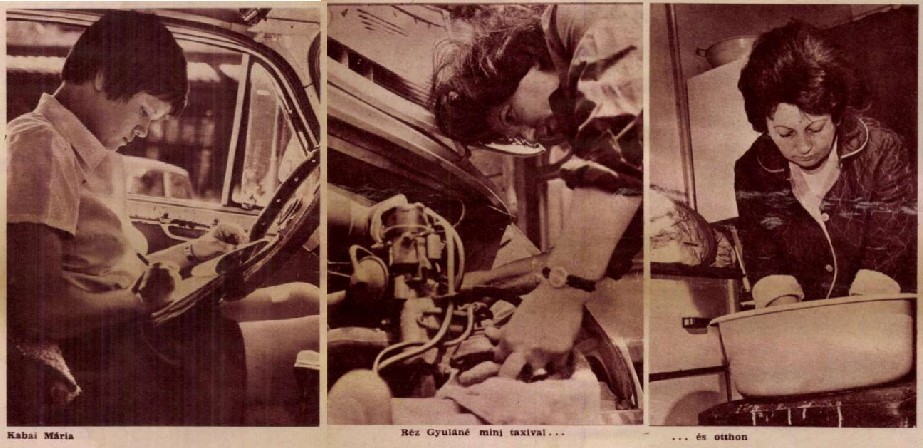
But.
It starts at 20 (20-AKÖV-ed.), where a few percent of the volume is even worth it for propaganda. And only then it is transferred to Volántourist, which is being reorganised as a new company, where Volán, together with taxis, represents more than 50 percent and where commercial profit is a matter of life and death.
A Zastava with a self-supporting body may be fine for a privateer, but it is not good for a taxi because of the heavy use. In the socialist countries, there are no suitable models for this purpose.
In addition
Thirty-nine of the first fifty (or 49, as there was already one man "squeezed in") - thirty-nine women - start with thirty hours of driving experience as a self-driving taxi driver. Some of them drive through the city at two speeds. It's not even possible to find the right one for cold water. Even the Zastavas bear the marks of their student days.
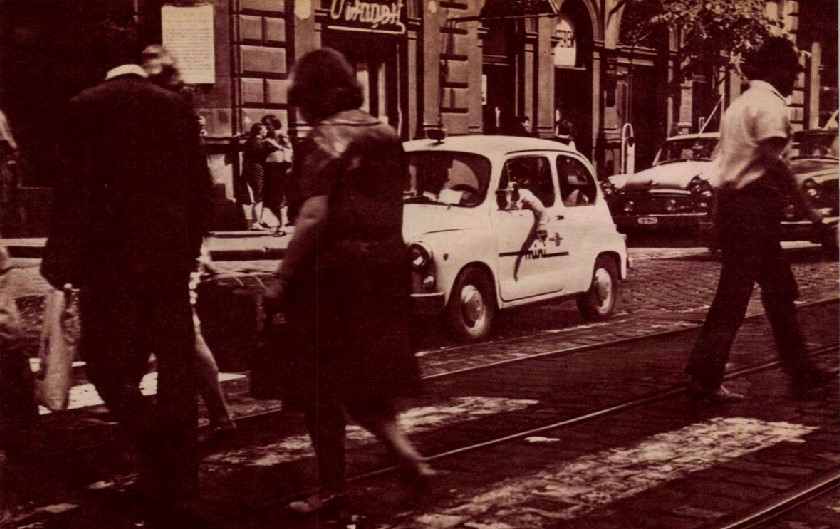
And now?
There are only 34 women working in 92 minicabs. But there is now a cadre of women who understand and love their job, and who are at least as capable as the men.
Technical condition? You shouldn't even ask that! They still go because they have to, because what can be done.
Volántourist cannot solve the problem on its own. Running a good part of the minis to zero seems impossible. To buy a new vehicle would need at least 6-7 million, then the high residual value and the loss of revenue, so all in all 9-10 million. And foreign currency, because the little Austin would be a suitable type.
Ten million and foreign currency. You can't even wish for that today.
Is there a solution?
All the journalist can say is that the excellent idea is very much needed in the big city and the job is very
suitable for women.
That you are avoiding an open and direct answer?
What else can you do? You can only hope that the authorities will find a solution.
The mini-problem is a funding and development problem, not a women's issue. Why force it to be?
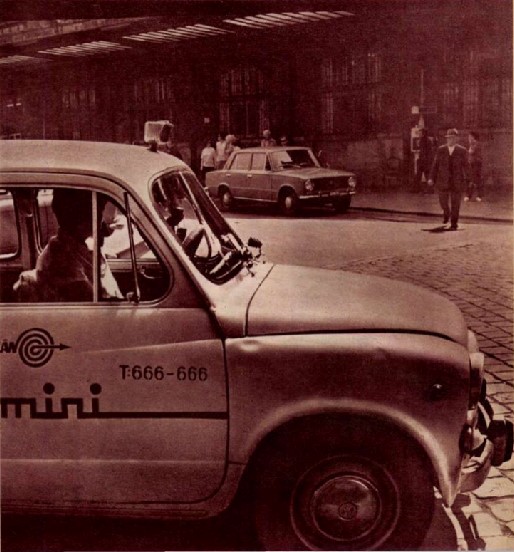
This job is very suitable for women - that was the message three years ago. It was then that it was linked to the women's issue.
But has practice shown that it is a job for women? After all, the proportion is falling: forty-nine out of the top fifty were women. Of the second 50, only eighteen. Sixty-seven women in total, which means that the proportion has fallen from ninety-eight per cent to two-thirds in less than six months. After another two years, the sixty-seven will be halved, with men replacing those who leave.
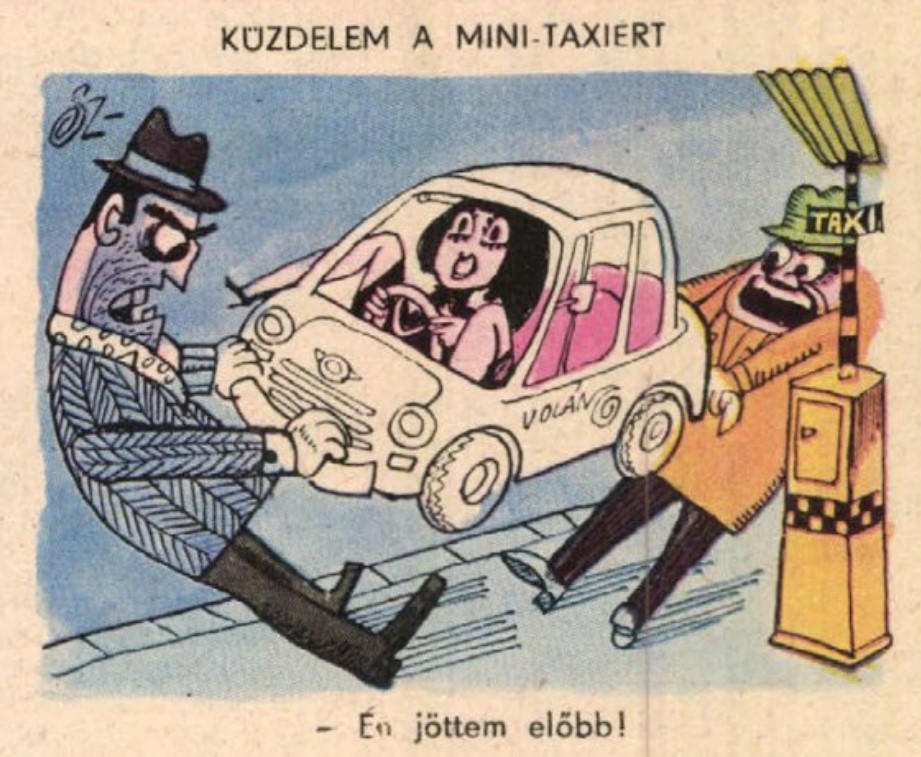
Image source: arcanum / Ludas Matyi 1970
The mini taxi was first widely publicised as a link to women, as the capital's public saw it when the novelty was on everyone's radar. And today, in two out of three cases, a male colleague takes the dear passenger.
This job would otherwise be very suitable for women ...
- We didn't privilege it exclusively for women, but left it to young people of KISZ age," says Dr Béla Horváth, head of the traffic department.
- How? Three years ago, this is not how we journalists and, through us, the public, were told!
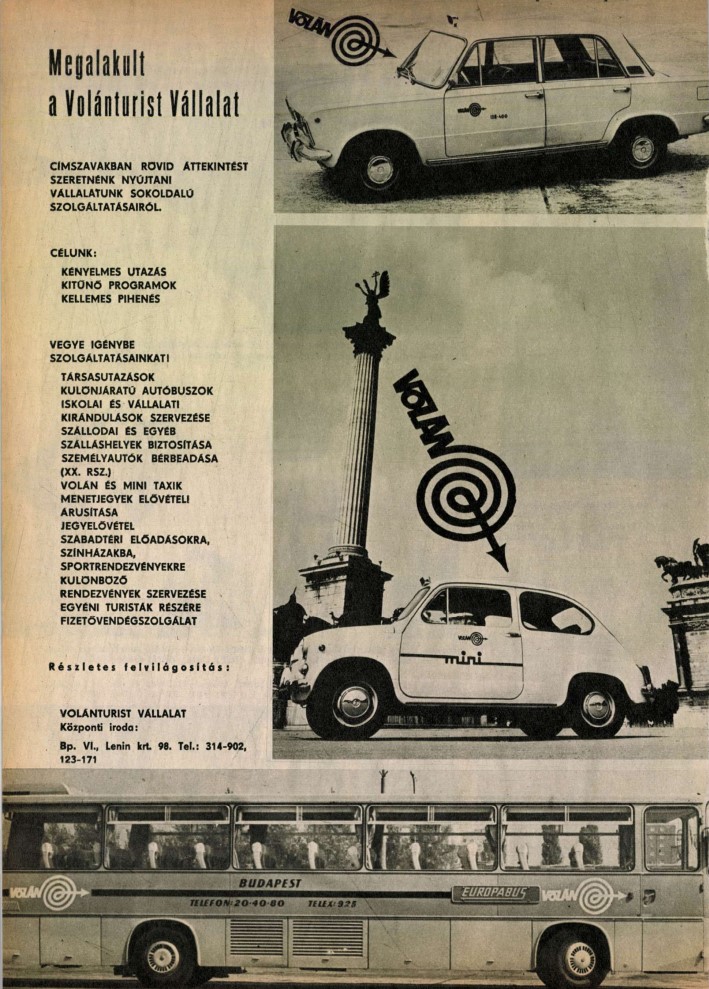
Image source: arcanum / Football 1970
- The minicab was taken over by Volántourist in January 1970, after a quarter of a year of operation. The independent operating unit was soon to become an independent company. Therefore, while the white carriage with its pretty ladies was a really nice sight, it could not be treated as a purely advertising activity. Whereas it was a small sideline in the '20s, here it became an essential profile, a source of sustenance for the company. And most of the lovely ladies started learning the trade in the minicab: not just taxi driving, but driving itself. Only a small proportion of them have achieved the required revenue. When the men joined, who were not only experienced drivers but also taxi drivers, they brought in double the required monthly income of 7400 HUF.
- So you had to hire men later to make the money?
- In the meantime, the nice ladies have also become familiar with the city's traffic and their income has increased month by month. The more talented of the two who stayed learned to drive a taxi. Only this method cannot be followed because it would ruin the company.
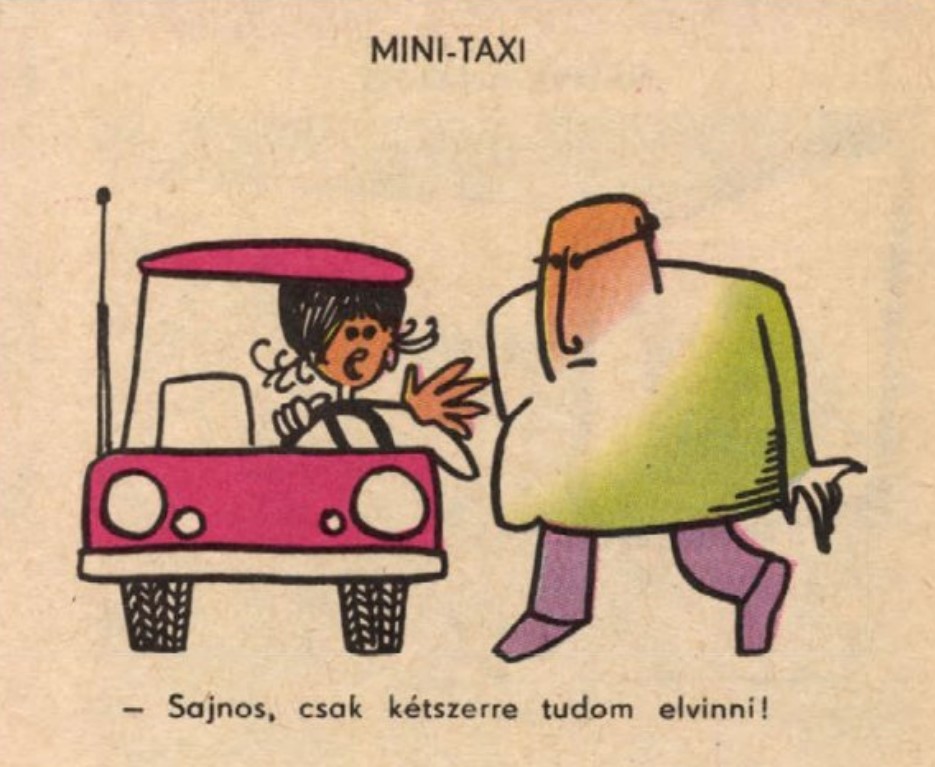
Image source: arcanum / Ludas Matyi 1970
How else does a woman become a taxi driver?
Tiborné Hobor, the women's representative of the Volántourist trade union committee, gives her own example:
- I became a taxi driver in 1960 because I was not hired anywhere else but as a driver. Women are not welcome in this job. At that time I had had my professional licence for a year and had no way of finding a job. I went to the union and asked: why did they let me study if they wouldn't hire me anywhere? With their help, I was hired as a garage driver for a taxi in the capital. After two years they let me out on the road. I came to the mini with experience. Out of the first forty-nine, there were only ten of us who had driving experience, and four out of the ten were taxi drivers.
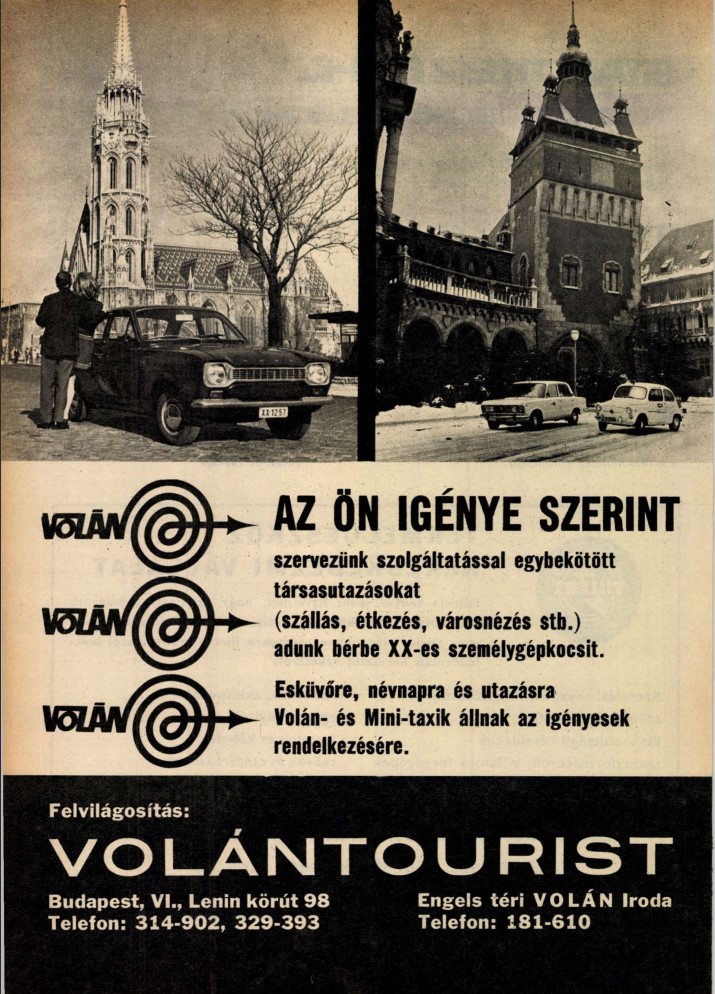
Image source: arcanum / Delta 1970
- And the others took the plunge at the first call?
- They didn't know what they were doing, they found it interesting. And yet, even with practice, the self-driving minicab
requires very serious performance from the person who does it. You have to get the ride yourself, because you are not on a drugstore and there is no URH on the minicabs like on the Volán taxis. We also have to do the repairs ourselves.
- The average salary is 1826 HUF and on average 9 days are lost due to repairs - adds Tamásné Kútsági, Head of the Labour Department.
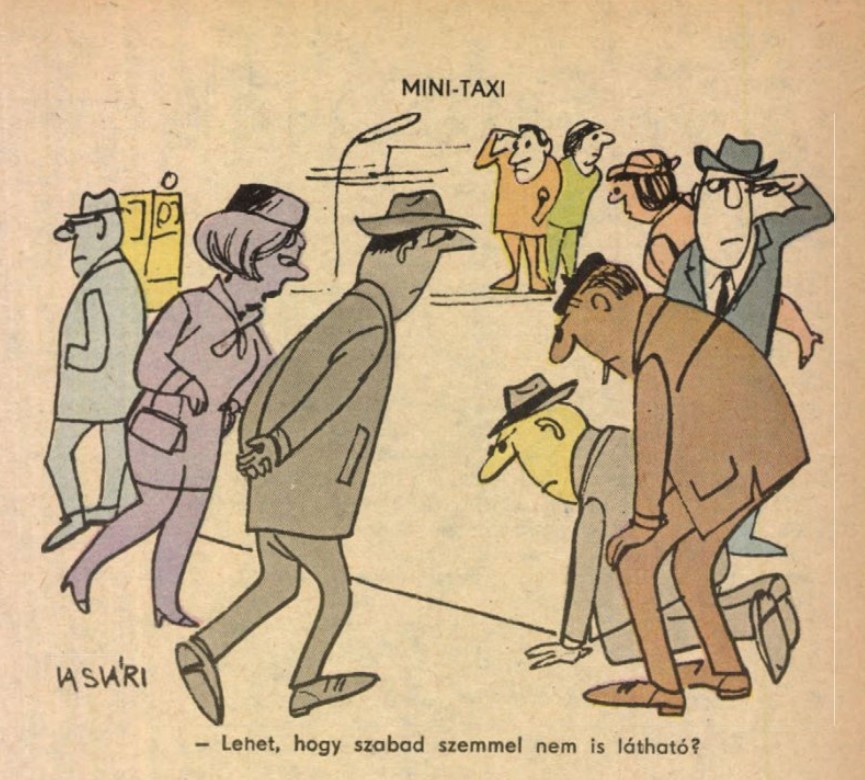
Image source: arcanum / Ludas Matyi 1969
Both the beginners themselves and the company paid for them. Dr. Béla Horváth also talks about this:
- There were ladies who had no idea where to fill the oil, how much oil to fill and when to change the oil. It takes serious preparation to get your car repaired, because you can't take it to the mechanic and say "it doesn't work". At the very least, you have to say something about why you want the repair. And the only way to make it worthwhile to do the minor things yourself is to do them yourself.
So how can a woman become a taxi driver?
- Taxi driving is a profession that even experienced drivers should learn. You have to be alert to when the theatre is over. He must know that they come from Buda to Pest in the morning. When the passenger gets out, ask: "Would you like to come back? If necessary, I'll be here for you on time".
The taxi market researcher also. This can only be learned by doing. It takes two or three months to decide whether or not a candidate will become a taxi driver. Of course we have to give time for that. But certainly not to acquire the experience of driving a car. If you concentrate on whether or not you can turn here or there, you cannot care about the passenger. Again, we tried to hire without driving practice. The result: the person crashed the car," says Géza Meszlényi, director of Volántourist.
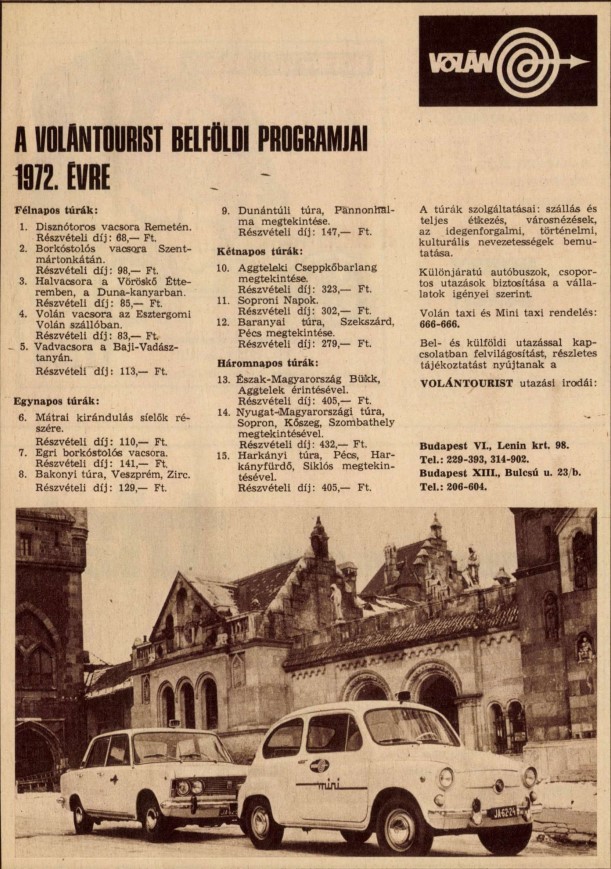
Image source: arcanum / Turista 1972
So should they get driving experience first?
Perhaps now that the state car fleet is being reduced, the number of female applicants will increase.
This is possible, even likely. But then? There will be even fewer opportunities for women to complete the required three years of training in a public car.
Should private driving be taken into account?
Or create an opportunity for newly qualified women with a driver's licence to get the necessary practice to drive a taxi while working?
A minicab would be a very suitable job for women. The only question we could not find a satisfactory answer to was how they could get to the point where they could fill this very suitable job with the right qualifications and the necessary experience.
Tibor Gallé
Photo by Péter Kőszegi
